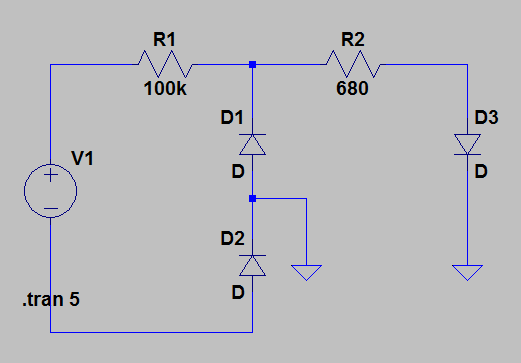Hello to everyone.
For a current project, i need to build a circuit that can detect, if the Voltage between to contact points exceeds about 50VDC.
If that is the case, two functions must be achieved:
1. An optocoupler has to give signal to another low-voltage side. For this a have an additional 12V Power-supply.
2. A visible LED has to turn on. The problem here is, that i can not use any other supply-voltage, then the one that i am measuring.
The Measuring-Voltage can range from 0 to 600VDC.
First i want to focus on function number 2.
I have build a circuit that fulfilled these requirements based on an LR8 Voltage-Regulator in the past, but it uses a bunch of components.
Since my functionallity is basically the same as a contact-Voltage-tester, i thought, there must be a simple way to do this.
Unfortunattely, i do not have a voltage-tester to spare, to take it apart and reengineer the circuit.
I tried figuring out something on my own.

D1 = Zener, ~40V
D2 = Zener, ~6V
D3 = LED
R1 = Current Limiting Resistor
R2 = Current Limit for LED
But with this approach, because of the high input voltage range, either the used energy gets quite high, or i do not have enough energy to drive my led reliably.
Am i missing something?
Or does anybody have a hint on a better solution?
Or maybe someone has a scematic of a contact-voltage-tester?
I would be thankfull for all input!
Greetings,
Philipp